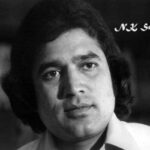Be it the present-day celebrations organised religiously by the Maharana of Mewar Charitable Foundation and the royal family, or the glimpses of history we get to read from the journals of legendary historians and the paintings of the Udaipur atelier, Holi, the symbol of victory of good over evil, has been keeping alive our centuries-old culture and heritage
 By Rajeshwari Kalyanam from Hyderabad
By Rajeshwari Kalyanam from Hyderabad
It was the Holi of 2019 before COVID-19 closed the world and travel for me, when I visited The City Palace Museum, Udaipur – the iconic structure that marks the opulence of the former State of Udaipur and the architectural excellence of the royal palaces built on the banks of Pichola Lake. And, here I was privy to the preparations of one of the most important events in the royal calendar that need to be witnessed in all its splendour.
The home to the Maharanas of Mewar before it was formally dedicated to the people as a museum in 1969, the 450-year-old architectural marvel, The City Palace, was built using the local materials – marble, limestone and cladded with a variety of materials that have lasted for centuries. The palace has seen successive improvements, changes, and conservation through the lifetime of 23 rulers. It is representative of the creative and artistic talent nurtured by the royals, irrespective of where they came from.
Just like in the paintings of Udaipur atelier, the architecture too is a study of contrasts and syncretism as you get to see glimpses of the many influences from the imposing courtyards, the chowks, gateways, to the jharokhas, the mirror work, marble inlay work, murals.

The Mardana Mahal and Zenana Mahal of the City Palace were converted into museum space when Maharana Bhagwat Singh of Mewar (r. 1955-1984 CE) bequeathed the palace to the Maharana of Mewar Charitable Foundation (MMCF). And during the last 50 years it has grown into one of the most popular tourist places, and destination for academic research as well. The invaluable collection of paintings, sculptures, textiles, armoury even as the preservation, and conservation continues, has been garnering international attention.
The imposing façade of the City Palace that is 800 feet in length and 100 feet in height has been the backdrop for one of the most amazing Holi festivities – the centuries-old tradition that the royal family continues to follow.
“The House of Mewar represents the longest serving, unbroken custodianship in the world. It is a custodianship that transcends all boundaries of kingship and democracy. The legacy of the House of Mewar has been passed on since 75 generations and is still alive in our ceremonies, rituals, and festivities. People, from near and far, become its stakeholders as they experience this ‘living heritage’. This heritage is not a sculpture carved in the past, al dente and voiceless, which time will inevitably grind down and turn to dust; it lives with us and as we live, evolves, and thrives becoming even more burnished and beautiful with the passing of each day. The City Palace was and continues to be the site for all the rituals, spectacles, and celebrations of the Mewar family.”
– Extracted from the message from Arvind Singh Mewar (Chairman and Managing Trustee Maharana of Mewar Charitable Foundation) ahead of 2019 Holika Dahan Celebrations.
The preparations for the grand event begin much ahead making the courtyard ready for public viewing as the Head of the family heralds the festivities with Holika Dahan. There are folk dances, pomp and gaiety, and the royal feast on the day of Holi. Holika Dahan presented by the MMCF – is termed as ‘the time-honoured Eternal Mewar Festival with an object of preserving artistic, religious and historic interest for cultural conservation of heritage’.
James Tod, the scholar
In 1820, James Tod, the scholar known for his extensive work on Rajputana (Rajasthan), beautifully describes scenes from one such Holi celebrations that he had witnessed: “As Phalgun advances, the bacchanalian mirth increases; groups are continually patrolling the streets, throwing a crimson powder at each other, or ejecting a solution of it from syringes, so that the garments and visages of all are one mass of crimson. On the 8th, emphatically called the Phag, the Rana joins the queens and their attendants in the palace, when all the restraint is removed, and mirth is unlimited. But the most brilliant sight is the playing of the Holi on horseback, on the terrace in front of the palace. Each chief who chooses to join has a plentiful supply of missiles, formed of thin plates of mica or talc, enclosing this crimson powder, called abira, which with the most graceful and dextrous horsemanship they dart at each other, pursuing, caprioling and jesting.”

British artist Val Prinsep in his journal – Imperial India – describes in detail how in 1877, during the reign of Maharana Sajjan Singh, Holi was played in similar fashion on elephants. It makes for a delightful read as he refers to Holi as the great game to pelt everybody with red powder made from cinara nuts and shares how he ends up learning to play, and that it reminded him of the carnival at Rome.
Many royal artists over the centuries have recorded the Holi festivities of Udaipur – the capital of Mewars in their grand paintings. One such painting from the Sisodia atelier that is published with the story goes back to 1851. In the painting, Maharana Sarup Singh is seen playing Holi on his horse back. Dipti Khera writes in her book, The Place of Many Moods: Udaipur’s Painted Lands and India’s Eighteenth Century, “The Maharana, with green and gold nimbus, is seen four times, riding the horse Baz Bahadur, as he celebrates the spring festival of Holi, in March 1851 (8th of the bright half of Phalgun, V.S. 1907). Watched by a crowd of courtiers, Sarup Singh and his nobles ride about the palace courtyard showering one another with coloured powder (gulal).”
Sequential pattern
Using sequential pattern to symbolise movement is a unique method you see often in the large canvases produced in Udaipur – these paintings are part of the collection at The City Palace Museum, some of which are currently being displayed at the Smithsonian National Gallery of Asian Art, Washington DC.
Holi, one of the most popular amongst the many Indian festivals is celebrated on Phalgun Poornima (the full moon day of the lunar month) – a time when the seasons change, when winter gives way to spring. The first day celebrates the triumph of good over evil, while the second is an expression of universal brotherhood and strengthening of the secular fabric of India.
At The City Palace Museum, Udaipur, it continues to be celebrated as invaluable part of living heritage. This year, Dr Lakshyaraj Singh Mewar performed the auspicious ritual of lighting the Holika at Manek Chowk, followed by folk dances and festivities.
(All pictures used in this story have been provided by the writer)
The writer, a senior journalist, is the Chief Editor of www.fridaywall.com, FW Media & Content Solution












More Stories
Every Keralite’s pride: How Kerala is celebrating Sanju Samson’s selection in World Cup squad
When Rajesh Khanna left the shoot mid-way, told scribe, ‘I’m going for a screw’
Of the Northern Lights and an Adventure with Huskies in Swedish Lapland!